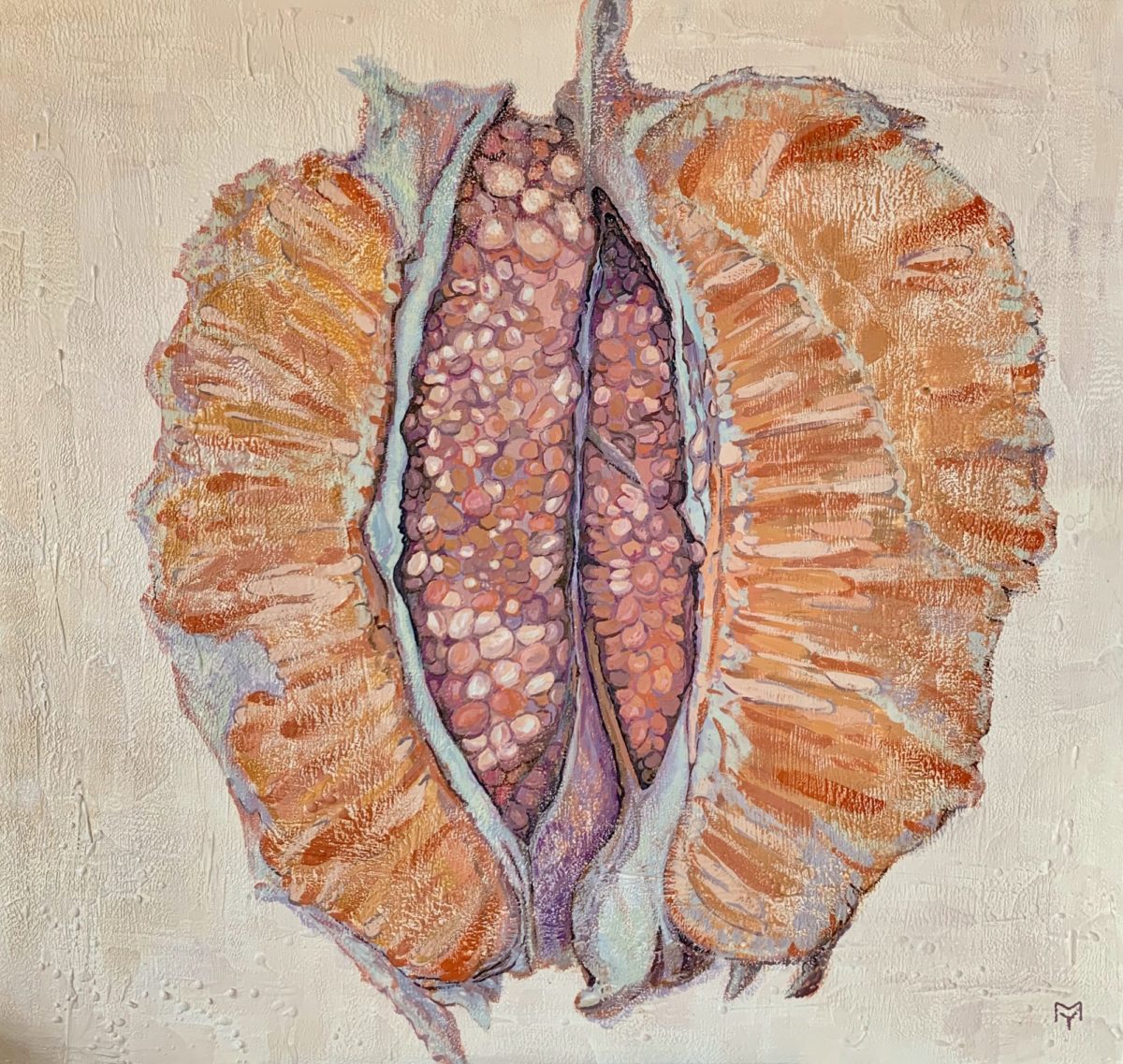Description
Painting is dedicated to the fruits of delightful orange trees. Oranges in Greece grow in orange gardens, and not at all in the middle of streets and alleys. Bright orange juicy fruits which grow on every tree, in fact, are not oranges, but the wild fruits of «νεράντζια» – Pomeranian, chinotto or bigaradia. These fruits, apparently no different from ordinary orange, taste sour-bitter, and, as a rule, are not eaten. The exception is the rare recipes of Greek national cuisine when they are served for meat instead of lemons. Modern Greeks treat Pomeranians quite indifferently. In ancient Greece, people fought with the help of these plants, which possessed a specific aroma. After the famous campaigns of Alexander the Great, the ancient Greeks first met real orange trees. The smell of their fruits reminded them of the rind, so oranges began to be called zedros. The inhabitants of Hellas called citrus only oranges. According to legend, the goddess of the land gave Hera on the day of her wedding with Zeus golden orange gardens. The first wedding night of the great gods lasted three hundred years: pouring water from a sacred spring and enjoying the smell of oranges, Hera again and again became a virgin. From uninvited guests, this magical orange garden was guarded by Hesperides and the monstrous dragon Ladon.

